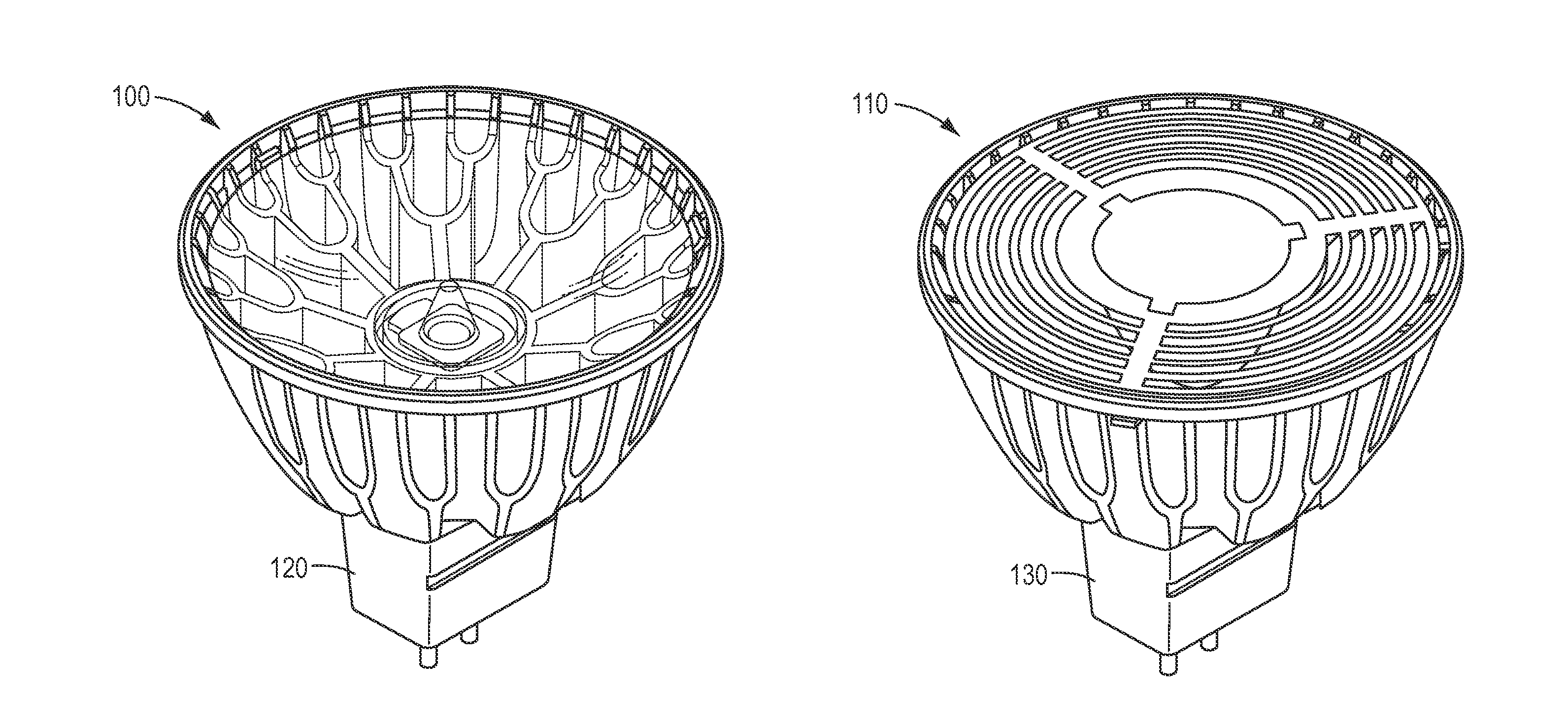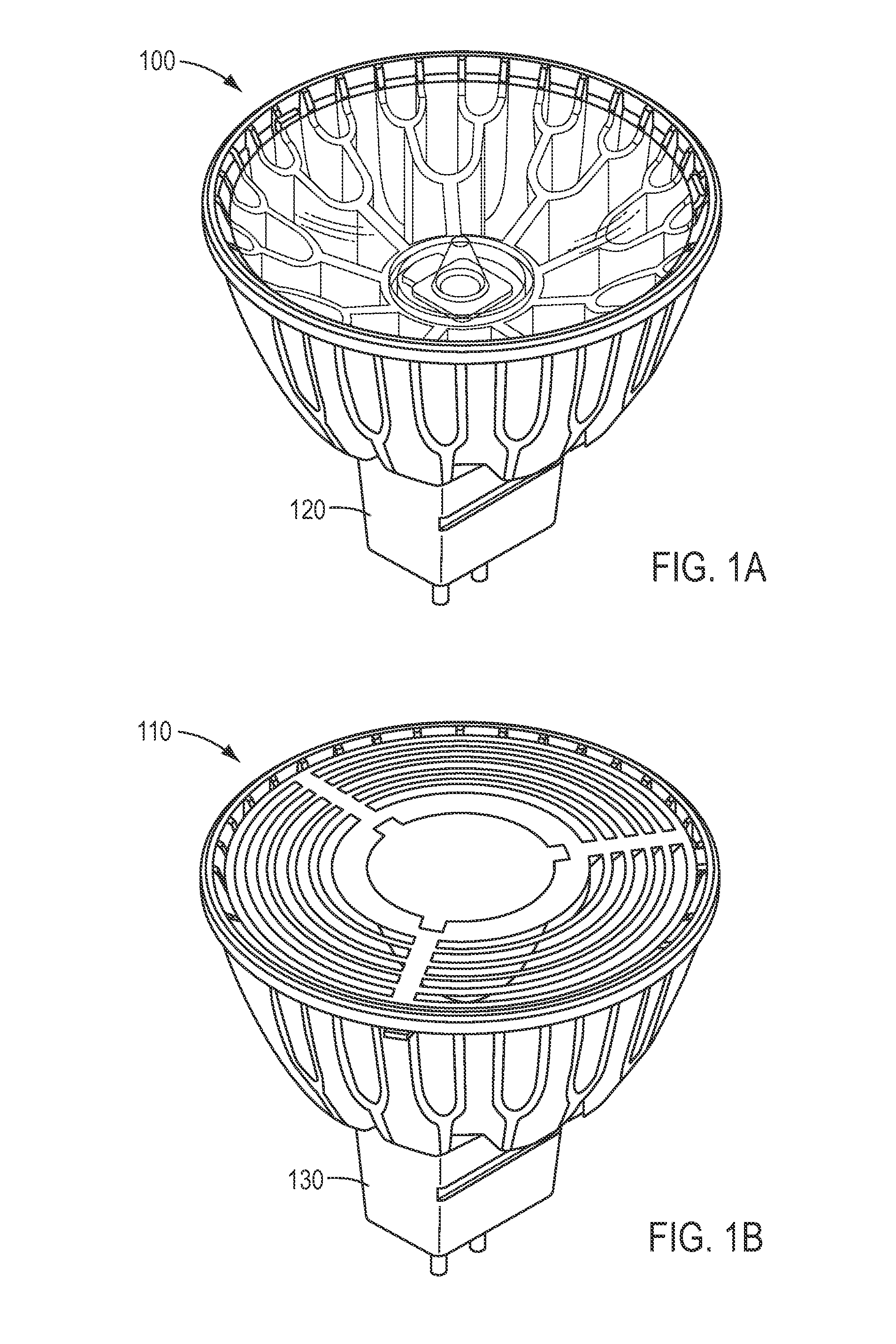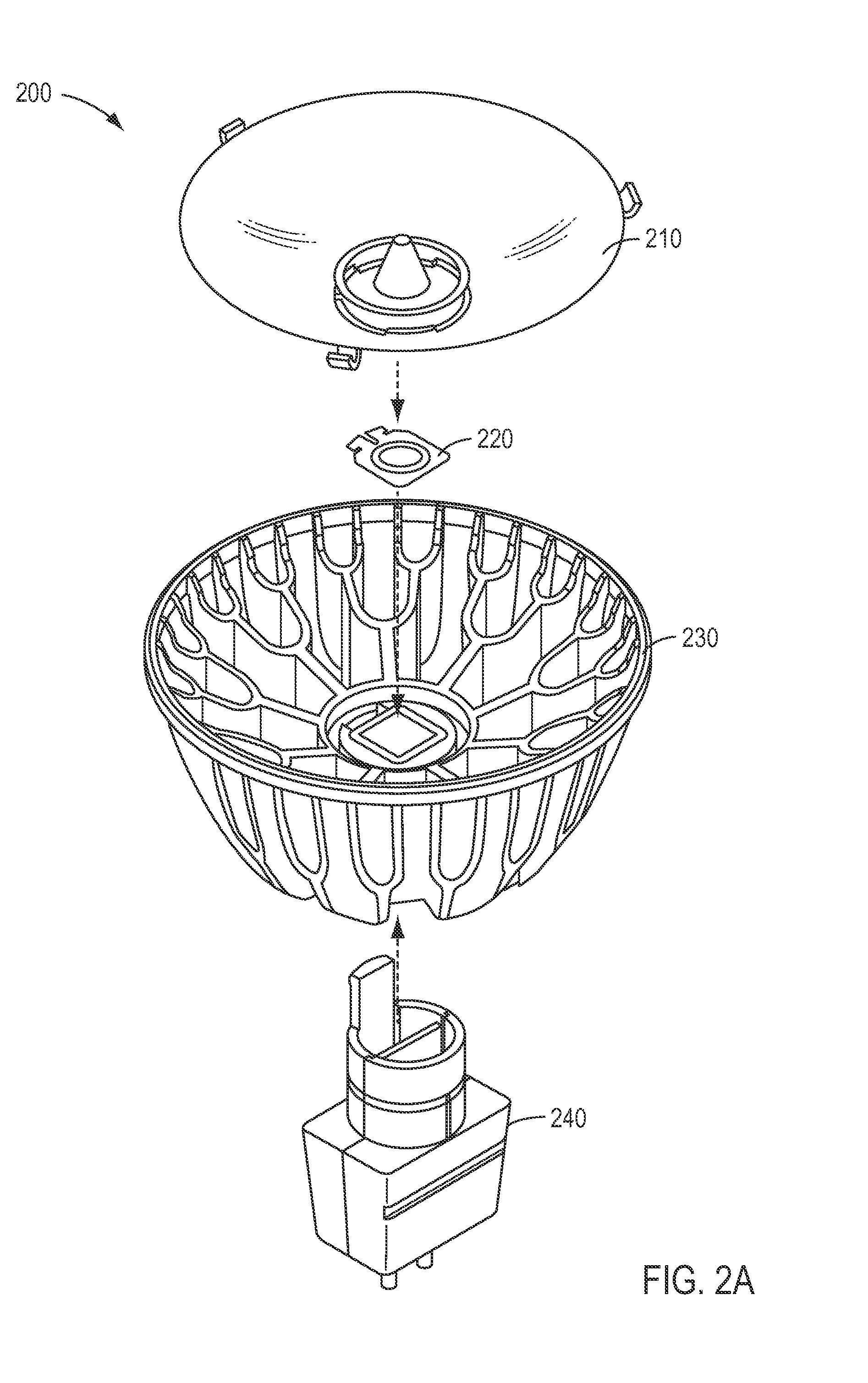Illumination source with direct die placement
a technology of die placement and illumination source, which is applied in the manufacture of electrode systems, electric discharge tubes/lamps, lighting and heating apparatus, etc. it can solve the problems of not being able to simply dispose of spent lamps at the curbside, the newer technology is not widely adopted, and the resistance to switching to alternative light sources, etc., to achieve the effect of eliminating hand wiring and facilitating volume manufacturing
- Summary
- Abstract
- Description
- Claims
- Application Information
AI Technical Summary
Benefits of technology
Problems solved by technology
Method used
Image
Examples
Embodiment Construction
[0026]FIGS. 1A and 1B illustrate two embodiments of the present invention. More specifically, FIGS. 1A and 1B illustrate embodiments of MR-16 form factor compatible LED lighting sources 100 and 110 having GU 5.3 form factor compatible bases 120 and 130. MR-16 lighting sources typically operate with 12 volt alternating current (VAC). In the figures LED lighting source 100 is provides a spot light having a 10 degree beam, while LED lighting source 110 provides a flood light having a 25 to 40 degree beam.
[0027]An LED assembly such as described in the pending patent application described above may be used within LED lighting sources 100 and 110. LED lighting source 100 provides a peak output brightness from approximately 7600 candelas to 8600 candelas (with approximately 360 to 400 lumens), with peak output brightness of approximately 1050 to 1400 candelas for a 40 degree flood light (approximately 510 lumens to 650 lumens), and approximately 2300 candelas to 2500 candelas for a 25 degr...
PUM
 Login to View More
Login to View More Abstract
Description
Claims
Application Information
 Login to View More
Login to View More - R&D
- Intellectual Property
- Life Sciences
- Materials
- Tech Scout
- Unparalleled Data Quality
- Higher Quality Content
- 60% Fewer Hallucinations
Browse by: Latest US Patents, China's latest patents, Technical Efficacy Thesaurus, Application Domain, Technology Topic, Popular Technical Reports.
© 2025 PatSnap. All rights reserved.Legal|Privacy policy|Modern Slavery Act Transparency Statement|Sitemap|About US| Contact US: help@patsnap.com



